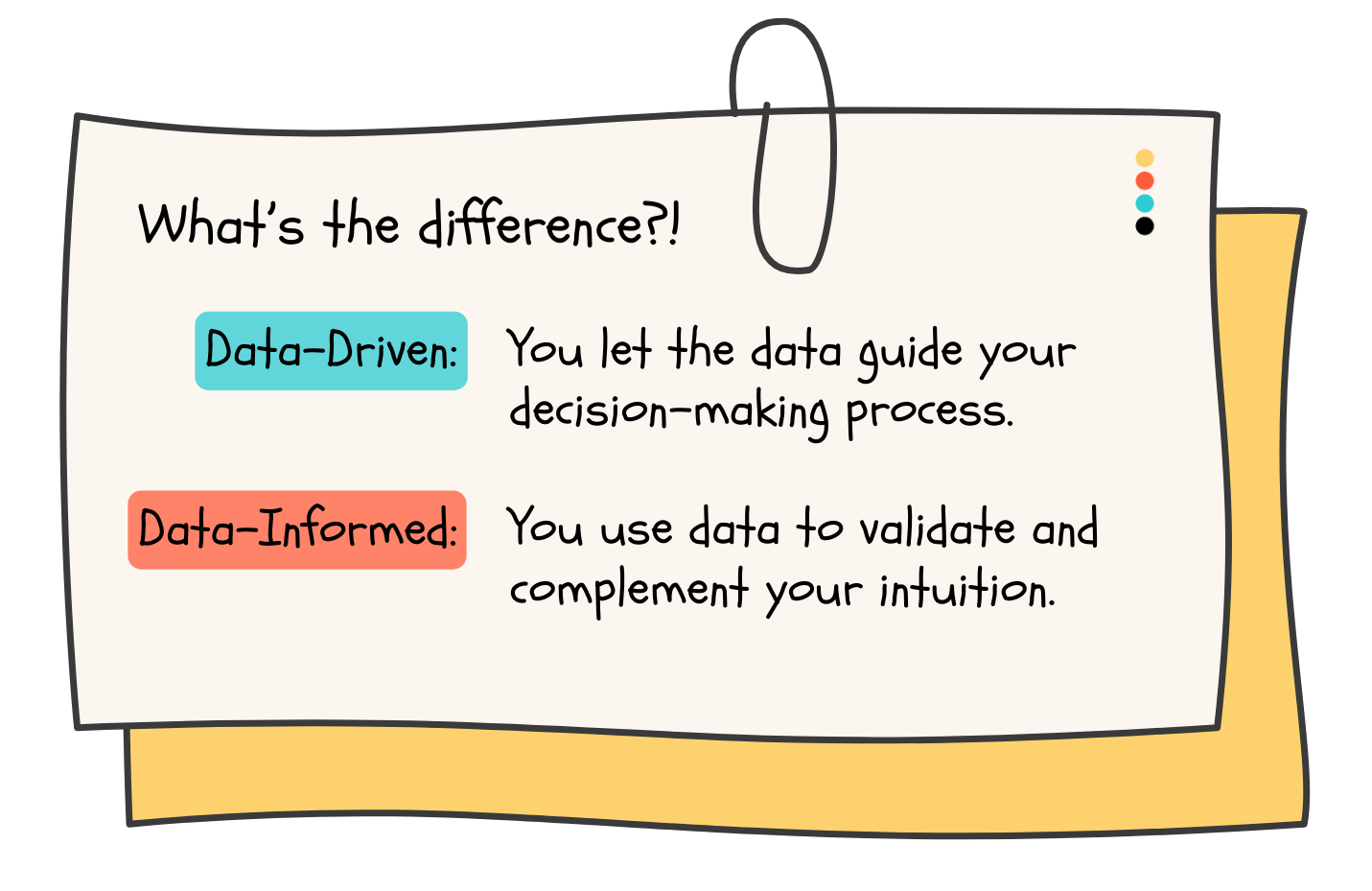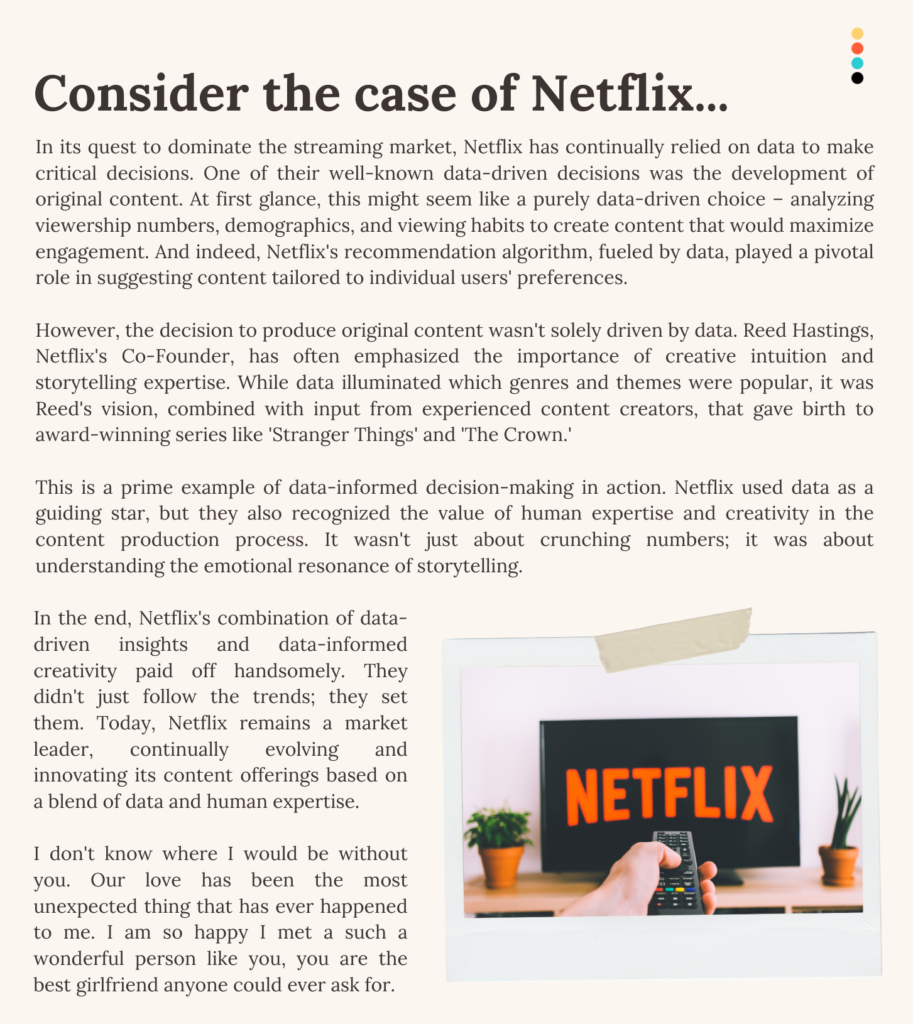In a domain like SaaS, where the success of a business, particularly one driven by products, hinges on user behaviour patterns, the skill of harnessing data effectively becomes of utmost importance. This can also be true for service-providers within the space, especially when it comes to managing accounts effectively. Whether you’re a CEO, CTO, CRO, or any key decision maker in your tech business’s Revenue Operations team, the choices you make are critical. However, if we are to thrive in tech and business, it’s also important to support the significance and impact of understanding data org-wide. The more your people know data, the more they understand the business.
This mere belief system has been recognized by most companies; some to a point where it’s even obsessed over. What do we mean by this? While some companies choose to take the importance of data analytics and use them to guide the general direction in which they should head in, others are also trusting analytics to steer and manoeuvre the entire ship…sometimes under a mean storm cloud. So, on one hand, we’re told we should pay attention to the data and now we have a reservation on how much we pay attention. We don’t blame you for being confused over these mixed messages. Hang tight – we’re here to help unwrinkle your thoughts. This article unveils the secrets behind two distinct but equally vital approaches: Data-Driven and Data-Informed Decision-Making. So reading about data can sometimes get a little bit dry, we get it. Here are 5 benefits and reasons you want to keep reading:
- Maximizing Your ROI: Discover how to extract every ounce of value from your data investments, ensuring that your decisions consistently lead to improved returns on investment.
- Gaining a Competitive Edge: Gain a competitive advantage by making decisions faster and more accurately than your competitors, ultimately securing your position as an industry leader.
- Cost Efficiency: Learn how to optimize resource allocation, reducing wastage and streamlining your operations for greater efficiency.
- Enhanced Customer Satisfaction: Uncover insights that allow you to tailor your SaaS offerings precisely to your customers’ needs, resulting in higher satisfaction rates and customer retention.
- Future-Proofing: Equip yourself with the knowledge to adapt to ever-changing market conditions, ensuring your SaaS company’s long-term success.
At Lane Four, we love talking Data Metrics so much that we’re excited to share more insights on this topic in the weeks ahead. But first, let’s kick things off with delving into the heart of the matter: Data-Driven vs. Data-Informed Decision-Making.
Data-Driven Decision-Making
Imagine your company as a luxury speedboat. Data-driven decision-making is the locomotive propelling it forward with precision and efficiency. In this approach, decisions are primarily based on historical data, quantitative metrics, and analytics. Here are the key characteristics:
- Quantitative Focus: Data-driven decisions rely heavily on hard numbers. Metrics, KPIs, and statistical analysis are the guiding stars. For instance, you might look at churn rates, customer acquisition costs, or revenue growth percentages.
- Automation: Automation tools are often employed to collect, analyze, and interpret vast datasets rapidly. This ensures that decisions are made with the most up-to-date and accurate information.
- Predictive Analytics: Predictive models are used to forecast future trends, allowing your company to proactively adapt and capitalize on opportunities or mitigate risks.
- Objectivity: Emotions and biases are minimized in data-driven decision-making. The focus is on ‘what the data says’ rather than personal preferences or gut feelings.
- Rigidity: While data-driven decisions are precise, they can sometimes be inflexible. They might not account for unique, non-quantifiable factors that occasionally play a crucial role in decision-making.
Relying on data alone to steer your decisions means continuously collecting mass amounts of information to refine models and identify trends. However, there’s a caveat—data alone can never paint the complete picture, nor can it provide precise instructions for the next steps required for sustainable growth.
Regrettably, some organizations mistakenly believe that data should serve as their sole compass, often getting caught up in fine-tuning minor details instead of staying abreast of the bigger picture. So what’s the other option?
Data-Informed Decision-Making
Now, imagine data-informed decision-making as the captain at the helm of the speedboat we mentioned earlier, responsible for not only its speed but also the comfort and experience of the passengers, while diligently considering the conditions of the waters that lie ahead. What distinguishes exceptional companies from others, though, is the extent to which they rely on their own critical thinking versus delegating decision-making to data alone. In this approach, data serves as a valuable input, but it doesn’t dictate the entire journey. Key characteristics include:
- Holistic View: Data-informed decisions consider both quantitative data and qualitative insights. This broader perspective ensures that you’re not blind to factors that might not be easily quantified, like customer feedback or market sentiment.
- Flexibility: Decisions are more adaptable to evolving circumstances. While data plays a pivotal role, it’s not the sole driver. This flexibility can be especially useful in rapidly changing SaaS markets.
- Human Expertise: Expert judgement, industry knowledge, and experience are highly valued in data-informed decision-making. These factors complement the data, providing a more well-rounded decision-making process and encourages deeper understanding of data and analytics by team members.
- Risk Management: By considering a wider range of inputs, data-informed decisions are often better equipped to manage risks and uncertainties that may not be apparent in purely quantitative data.
- Customer-Centric: This approach places a strong emphasis on customer needs and feedback, ensuring that your SaaS offerings are aligned with what your users truly want.
Embracing a data-informed approach means blending the power of intuition with data-driven insights to formulate testable hypotheses about whatever you are selling. This dynamic approach recognizes the synergy between qualitative and quantitative aspects of data, understanding that data operates within a broader context that acknowledges the potential for bias in both its collection and analysis.
This shift toward data-informed decision-making doesn’t imply centralizing all data-related responsibilities to a single product manager or leader. Quite the opposite, it underscores the importance of fostering a data-fluent culture across your entire team. Every team member should have the ability to leverage data effectively across different areas of the business.
From the earliest stages of customer acquisition, data-informed thinking is essential. It involves evaluating potential customers across contexts like enthusiasm, intent, and use case, enhancing customer development with easily digestible insights. Data-informed practices extend to account management and customer support, where metrics incentivize the team to prioritize the customer experience over superficial KPIs only. Similarly, in the realms of design and UX, data plays a crucial role in assessing how design choices impact user success.
A Synergy of Both Approaches

The real secret to success in the business realm: the synergy of data-driven and data-informed decision-making. It’s not about choosing one over the other but understanding when and how to blend them effectively.
For instance, you might use data-driven decision-making to optimize your pricing strategy based on historical usage patterns. Simultaneously, data-informed decision-making can come into play when launching a new product, where customer feedback and industry expertise are just as crucial as quantitative metrics.

This illustrates that in the SaaS space, a holistic approach that incorporates both data-driven and data-informed decision-making can lead to groundbreaking results. It’s about striking the right balance, much like the harmonious blend of data and creativity that propelled Netflix to its current heights. By understanding their differences and synergies, you can continue to propel your company forward in a meaningful way.
So, leaders, it’s time to unleash the full potential of your data. Embrace the power of data-driven and data-informed decision-making to lead your company to new heights of innovation, profitability, and customer satisfaction. Start by evaluating your current decision-making processes and identifying areas where you can harness the power of data more effectively. Seek out tools and resources that can help you automate data analysis and incorporate expert judgment. And most importantly, foster a data-centric culture within your organization. The journey begins with a single step, and that step is yours to take.
